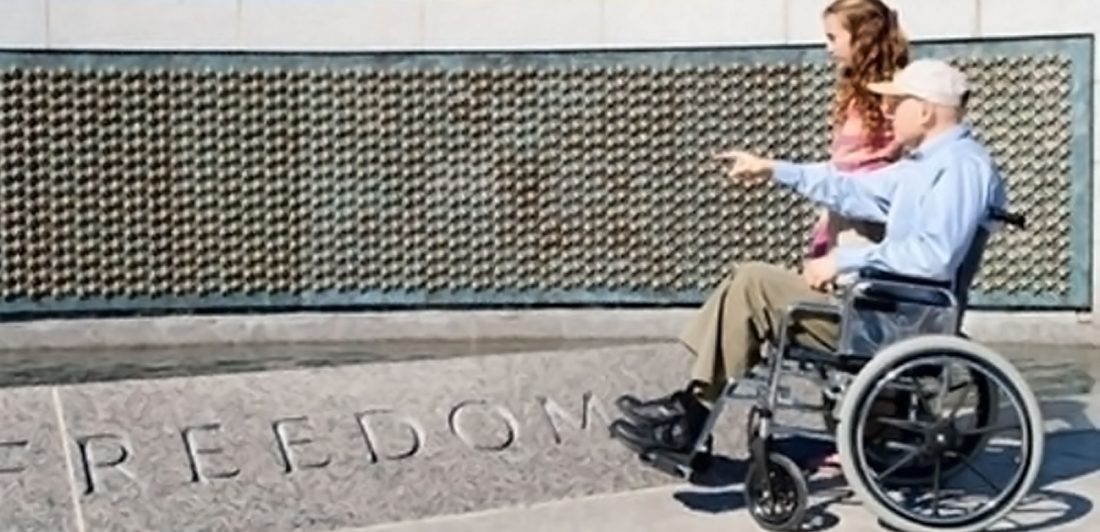According to data from the Department of Veterans Affairs, there were about 20.4 million U.S. veterans in 2016 from all wars and all branches of service. Unfortunately, veterans are at risk of developing mesothelioma or other fatal asbestos diseases as a result of asbestos exposure. While veterans represent only 8 percent of our nation’s population, they make up 30 percent of all known mesothelioma deaths in the country.
Asbestos was once highly regarded for its heat resistance and fireproofing capabilities. This made the substance a valuable tool for the U.S. Armed Forces. All five branches of the military used the material from the 1930s to the early 1980s—putting veterans who specialized in many military occupations at risk for mesothelioma.
The development of Mesothelioma
Mesothelioma is an aggressive form of cancer with asbestos exposure as the only known cause. This cancer starts in cells lining the organs in both the chest and abdomen. Asbestos can also cover the outer surface of your internal organs forming a lining called mesothelium.
The DNA in our genes control how cells grow, multiply and die. Over time, asbestos fibers lodged in the internal organs begin to interfere with the cell division process. This results in the formation of mesothelioma tumors on affected organs.
The process of developing mesothelioma is as follows:
- Asbestos loosens and fibers release into the air.
- A person swallows or inhales airborne asbestos fibers through the mouth or nose, often without realizing it’s happening.
- The asbestos becomes lodged in the lining of the lungs, abdomen and in rare cases the heart.
- The lodged fibers damage the mesothelial cells causing irritation and inflammation for many years.
- With time, tumors form most often in the tissues surrounding the lungs, but may also occur in the tissue in the abdomen, the tissue surrounding the heart and the tissue surrounding the testicles.
It is important to note that asbestos fibers can stay in the body for decades before mesothelioma develops.
Who is most at risk of developing mesothelioma?
Those who served in the U.S. Armed Forces between 1940 and the 1990’s are at the greatest risk of developing asbestos-related diseases due to a high rate of exposure. Veterans who worked in mining, milling, shipyard work, demolition of old buildings, carpentry and construction, manufacturing and installation of products such as flooring and roofing have an increased risk of mesothelioma development due to the exposure to asbestos. The risks factors by branch are as follows:
Navy
U.S. Navy personnel and workers employed in U.S. shipyards during World War II are at the highest risk for mesothelioma. Regardless of their size or function, nearly all Navy ships contained asbestos from bow to stern. Because of asbestos frequent use in the construction of navy ships, sailors have the highest risk of developing lung ailments. Many of these men worked in tight-fit and poorly ventilated areas on the ship such as boiler and engine rooms–where asbestos fibers floated freely.
Marine Corps
In World War II, Marines were transported on U.S. Navy Ships that were full of asbestos. U.S Marine Corps members may have also been exposed to asbestos through aircraft and armored vehicles. Further, Marine Corp bases may have exposed veterans through the flooring, ceiling tiles, roofing materials and insulation as well.
Air Force
Asbestos lined both land and air buildings and vehicles used throughout the Airforce. For example, aircrafts contained the substance for its insulation and fire resistance qualities. In addition, service members living on Airforce bases were exposed to asbestos in housing floors, ceilings, pipe and wall insulation, drywall and other areas.
Army
Although Army soldiers spent less time on ships than other branches of the military, they are also suffering from asbestos exposure. The U.S. Army used asbestos in military vehicles to provide insulation and protection from fire and extreme heat. Army vehicles had asbestos on brakes, gaskets, wiring, hosing and valves. This means that Army mechanics risked asbestos exposure during long days of handling the substance.
Coast Guard
The use of asbestos-containing materials was encouraged aboard Coast Guard vessels to lessen the threat of fire. In addition, all areas surrounding the engine and boiling room were insulated with asbestos and ropes used throughout the ships were woven with asbestos fibers.
Exposure during war
World War II veterans served during a period when asbestos use was extensive— putting these veterans at high risk of asbestos exposure.
Furthermore, those who served in Iraq and Afghanistan risked exposure to asbestos through the destruction of buildings. They could have inhaled the asbestos that was released into the air when these older buildings that were made with asbestos were bombed.
Mesothelioma Signs and Symptoms
The latency period for mesothelioma is typically between 15 and 50 years after the first exposure to asbestos. This means that veterans exposed to asbestos who retired from active duty decades ago can begin experiencing mesothelioma symptoms today. Because mesothelioma is difficult to diagnose, the start of treatment is often delayed which can limit treatment options. Many symptoms mirror those of less serious illnesses. For example, doctors may mistake early warning signs, such as a persistent cough, night sweats, and fever, for pneumonia or the flu — giving cancer more time to spread. Signs and symptoms include but aren’t limited to the following:
- Shortness of breath
- Chest pain and/or persistent cough
- Fever, night sweats and weight loss
- Pain or swelling in the abdomen
- Nausea
- Weight loss
- Bowel obstruction
- Anemia
- Swelling of the feet due to a build-up of fluid
If you are a veteran with known asbestos exposure, it is urgent to heed any early warning signs and request a chest X-ray or other early screening tests. While there are treatments that control tumor growth, there is not a definitive cure for mesothelioma. However, an early diagnosis may improve your prognosis and life expectancy.
The End of Asbestos
It wasn’t until the mid-1970s, after considerable publicity over the toxicity and long-term health problems of asbestos, that the military curtailed its use. Many of the veterans who receive a mesothelioma diagnosis today were first exposed to asbestos during the Korean or Vietnam wars and soon thereafter.
Compensation For Veterans With Mesothelioma
After serving for their country, veterans are left in anguish 20 to 50 years later due to the military’s extensive use of asbestos products throughout much of the 20th century. Many are left frustrated, disillusioned and some are even dying prematurely.
Vets who developed mesothelioma and other asbestos-related conditions after exposure to asbestos in the military qualify for special financial benefits from the U.S. Department of Veterans Affairs (VA), including disability compensation, special monthly compensation, and service-connected death benefits for surviving family members.
An approved mesothelioma VA claim provides much-needed help for veterans; such as access to treatment at any facility in the VA network.
How The Carlson Law Firm Can Help
Sadly, years of exposure to asbestos leaves the brave men and women who have made important sacrifices for others spending their final days battling mesothelioma. Many service members believed the asbestos was protecting them, but in reality, it has been killing them. If you or someone you love has been seriously injured, died or fallen ill with cancer or any other asbestos-related conditions, contact us for a free consultation today. Our experienced attorneys will help you seek fair compensation for your pain, suffering, and loss. We care. We can help.





